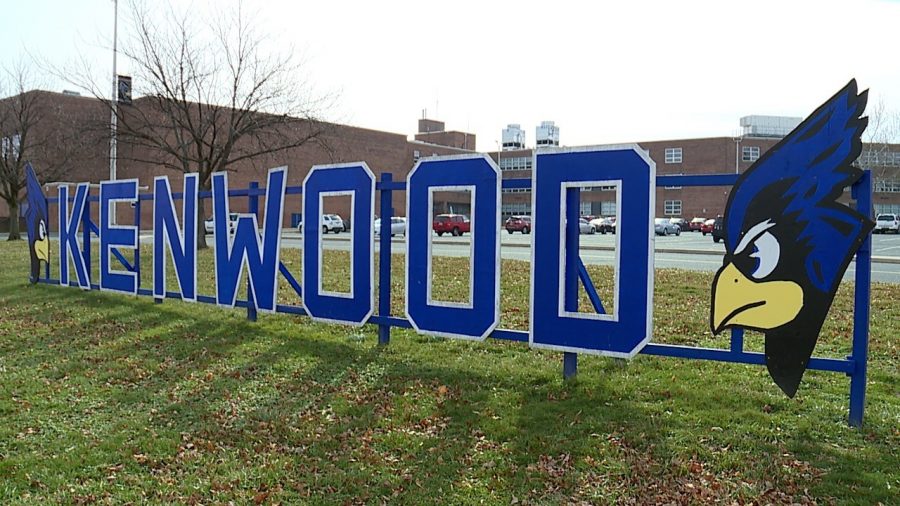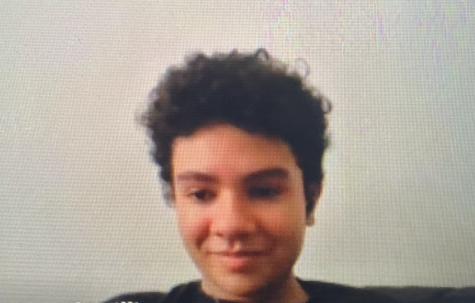Kenwood Students Promote News Literacy
Kenwood Journalism class interviews with WMAR’s Good Morning Maryland to talk about News Literacy Week.
January 27, 2021
Kenwood’s Journalism class interviewed with Baltimore’s WMAR Good Morning Maryland news anchor Christian Schaffer last week to talk about the importance and role of news literacy in their lives and for all news consumers.
News Literacy is a vital skill for all, not just journalism students, to have in today’s all-consuming digital world, but many wonder what even is news literacy? As young journalism students, part of our job as digital leaders in our school is to inform our peers of news literacy.
News Literacy is the ability to tell the difference between fake information and real information. It is also knowing and identifying the different types of news and information. Being news literate is being able to know the difference from facts, opinions, and assertions.
Being news literate can put you at an advantage to not be so easily fooled. Kenwood junior journalism student Natalia O says, “I’ve realized that you can detect things and ideas that are biased or even possibly fake. You can become a better consumer of news and avoid spreading fake news by looking at more than one source or one side of a story.” Being news literate gives students the skill set to not contribute to spreading false information and to also inform others of their mistake of spreading false information.
It’s important for all to remember not everything you read or hear is true news. Ms. Magnuson, Kenwood’s librarian, is an advocate in the school for teaching News Literacy to students. She not only teaches news literacy in classes and lessons but applies her skills in her daily routine of her own news consumption. “News Literacy is being able to tell the difference between facts and opinions and to understand possible bias the author has,” she reminds her students. “Authors have biases. Their bias is based on their personal beliefs and experiences, and it’s important to recognize them when we see them because as news consumers that bias may influence their perception and telling of the story.”
However, it’s not only recognizing bias and misinformation that students have noticed leads to the spreading of false information, but many people don’t seem to know of the varied types of information that is out there. “I think people struggle with the concept that there are different types of news,” shares Kenwood junior journalism student, Emily O. Some things are advertisements or propaganda meant to persuade their audience to see the information a particular way.
It is important to realize the difference between factual news and others’ opinions on what’s going on in the world. The news won’t always cater to personal beliefs or opinions, though whether you believe something is true or not, it’s good to check multiple trustworthy sources and not only read news that supports your beliefs.
Whether as writers or readers of news, it’s important for all to recognize their own biases as it tends to influence what a person believes to be true or not true. The media can be a tricky thing to navigate.
As a Journalism class, we’ve worked on showing others what to look for in order to become smarter consumers of news themselves. When looking at news on the internet, it is important that it is clear to know who is running the site. But also know any of their possible bias and what their reputation for providing trustworthy news is.
There are so-called news sites out there whose purpose is to spread false information to further their political or social agenda. It’s always best to do a little of your own research before sharing information on the internet.
Part of being news literate is to understand the role of headlines. Some sites create headlines that are known as “click bait” to catch the readers eye so that they click on it though the headline is misleading.
As easy as it may seem to get factual information, it’s also as easy, if not easier, to get unfactual information. Unfortunately, this is too common with younger people and others who use social media because that’s where false information gets spread the most. Just because someone you know says it, doesn’t mean it is true. All too often people won’t even bother to do their own research to check if what they’re spreading is real or fake.
With more people than ever using social media, it is hard to get the right information. It’s not only important for us as digital leaders in our school to learn about news literacy but for us all, no matter our age. We all need the skills of news literacy in order to be properly informed of what is going on in the world.
We all must know how to separate facts from false information, find reliable sources, understand biases, and understand that there are different types of news with different purposes. Fake news is so widespread that it’s truly difficult to separate facts from falsehoods, but if we all work on becoming news literate maybe we can cure the spread of false information.
Be sure to check out the journalism class news broadcast here.


